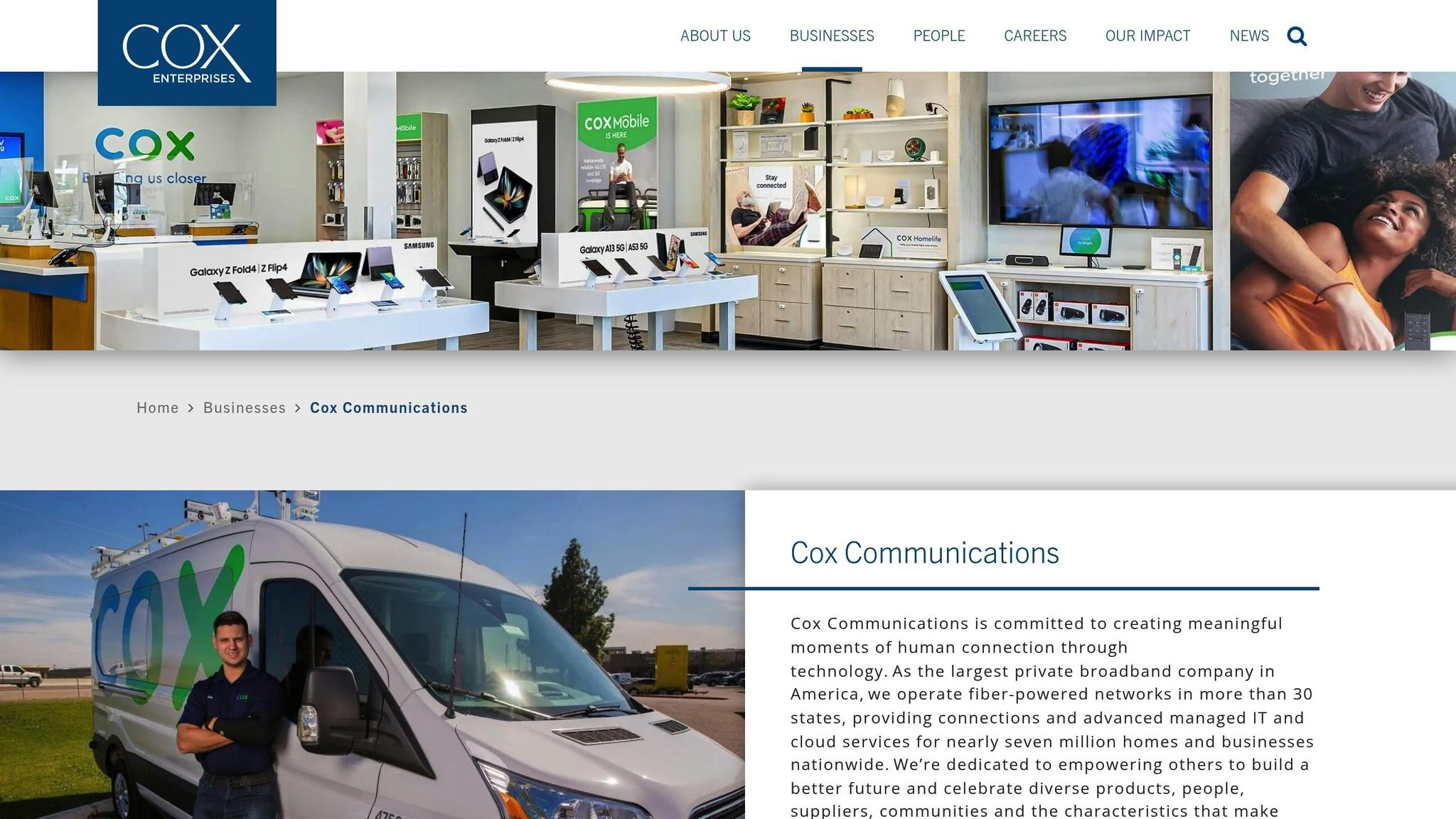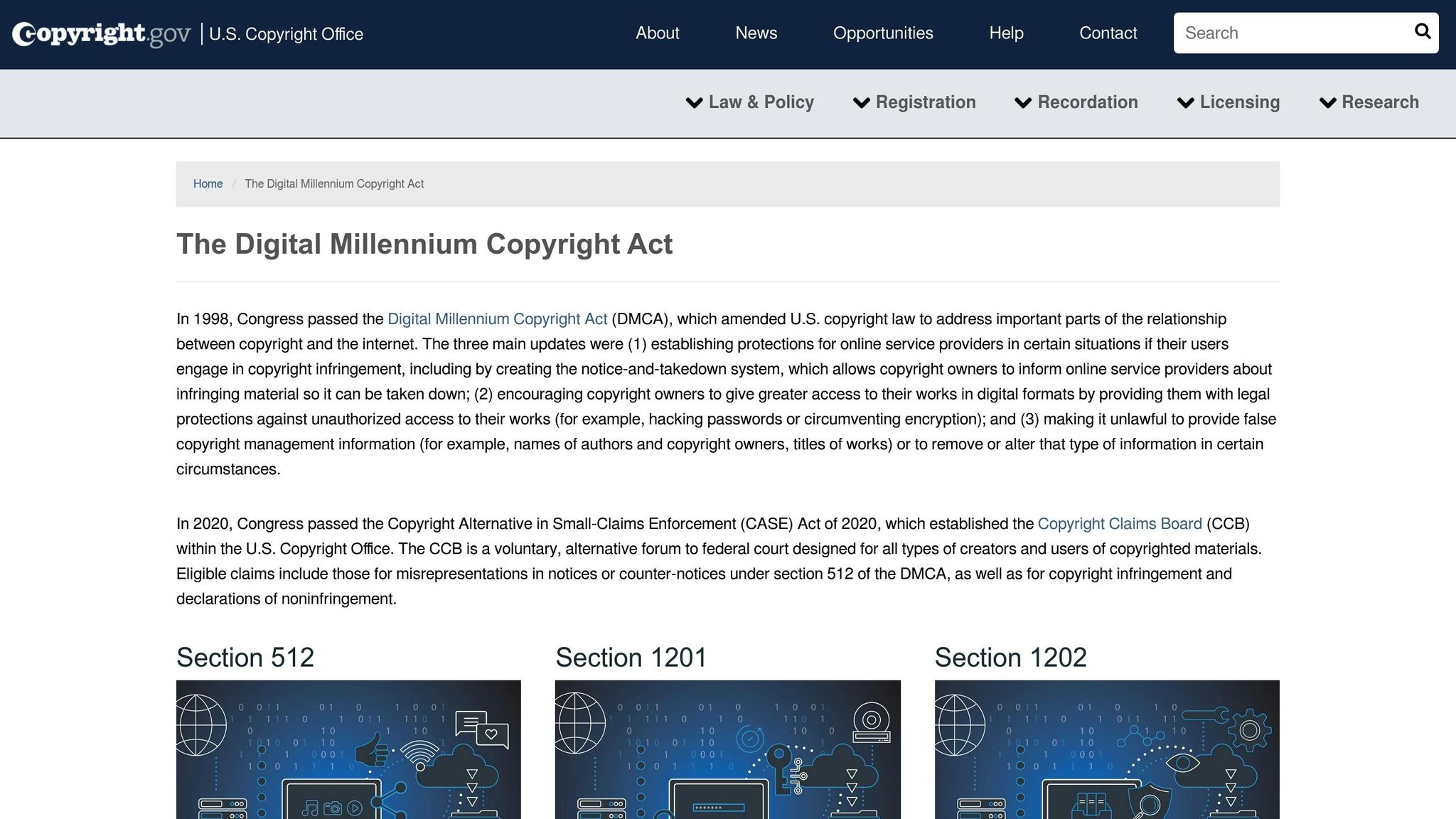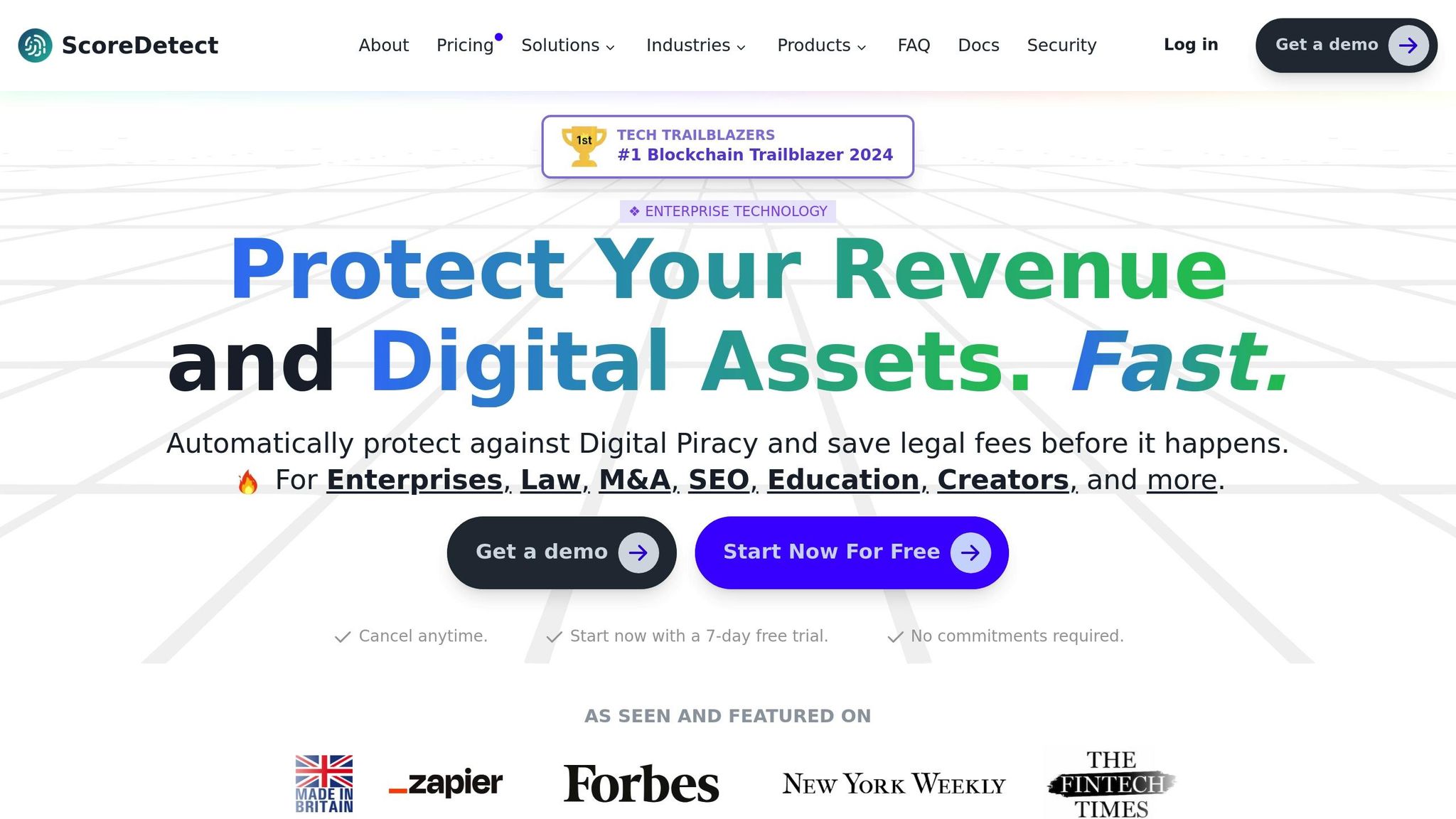Platforms are now facing stricter rules for copyright enforcement, with courts increasingly holding them accountable for user actions. Recent rulings, like the Cox Communications case, highlight the financial risks of failing to address copyright violations, including billion-dollar damages. Meanwhile, tools like ScoreDetect are helping platforms automate enforcement through AI and blockchain.
Key takeaways:
- Court rulings are shifting liability to platforms, requiring stricter compliance with copyright laws.
- Cox Communications case: A $1 billion verdict (later vacated) emphasized the need for platforms to act on infringement notices.
- ScoreDetect: A tool that uses AI to detect copyright violations, automate takedown notices, and strengthen proof of ownership.
Platforms must now balance legal compliance with user rights while leveraging technology to manage the growing scale of digital content. A mix of legal frameworks and automated tools offers the best path forward.
Suno And Udio Are Teaming Up Now… Lawsuits Update
1. Court Decisions on Platform Liability
The legal framework surrounding platform liability is undergoing a major transformation, with cases like Cox Communications playing a pivotal role. In June 2025, the Supreme Court agreed to review this case, signaling a potential shift in how internet service providers (ISPs) and platforms manage copyright infringement claims [1]. Let’s dive into the case, the evolving legal standards, and the practical hurdles platforms now face.
The Cox Communications Precedent

The Cox Communications case set a major benchmark for platform accountability. Back in 2019, a jury ruled against Cox, awarding a $1 billion verdict for contributory liability. The company was found at fault for ignoring numerous copyright infringement notices without taking adequate action. However, the court later overturned the vicarious liability claim, stating that general subscription fees from users engaged in infringement didn’t equate to a direct financial benefit [1].
Shifting Legal Standards
This case highlights a changing approach to contributory liability. Courts are now focusing on whether platforms significantly contribute to infringement by failing to act on alerts, rather than requiring evidence of active facilitation. For instance, a 2024 Fourth Circuit decision took this broader view, suggesting that platforms could face liability simply for continuing to provide their services. If the Supreme Court upholds this interpretation, it could drastically alter the legal responsibilities of platforms [1].
Practical Challenges for Platforms
These evolving standards bring a host of practical difficulties for platforms. Beyond setting up systems to process infringement notices, platforms are under increasing pressure to adopt stricter measures, such as automatic user disconnections. However, these measures raise several concerns, including:
- Due process: Users may face penalties without proper investigation.
- Privacy risks: Monitoring user activity could infringe on privacy rights.
- Error potential: Shared networks, like those in dorms or homes, could lead to wrongful actions against innocent users.
These challenges underscore the complexity of balancing copyright enforcement with user rights [1].
Expanding Copyright Enforcement
Recent cases are pushing the boundaries of copyright enforcement even further. For example, the 2024 case Gifford v. Sheil and a 2023 ruling against Bang Energy extended liability to include factors like social media aesthetics and the unauthorized use of music in advertisements [2][3]. These cases suggest that copyright enforcement is no longer confined to traditional domains but is now exploring newer, more nuanced areas.
Financial Risks and Legal Outcomes
The financial stakes in these cases are immense. While the $1 billion verdict against Cox was later vacated for retrial, lawsuits involving copyright infringement often result in damages and legal fees that can soar into the millions. This shift reflects a broader trend: moving away from targeting individual infringers and focusing instead on platforms that enable widespread piracy [1][3].
The DMCA Safe Harbor Under Review

The legal scrutiny extends to the DMCA safe harbor provisions, which protect platforms from liability for user actions. In the Cox case, a key question is whether an ISP’s failure to terminate repeat infringers after receiving notices disqualifies it from safe harbor protection. Courts now seem to demand more than just adherence to notice-and-takedown procedures – they expect proactive steps to prevent repeat offenses [1].
2. ScoreDetect (Digital Copyright Enforcement Tool)

Copyright enforcement has come a long way, and platforms are increasingly turning to advanced tools like ScoreDetect. Combining the power of AI and blockchain, ScoreDetect goes beyond traditional notice-and-takedown methods to tackle legal challenges in a more proactive way.
Preventive Technology and Legal Safeguards
ScoreDetect introduces a smarter approach to copyright protection by embedding invisible watermarks into content before it’s distributed. On top of that, it uses blockchain to record content checksums, providing a timestamped proof of ownership. This creates a strong legal foundation against infringement claims. Instead of waiting for violations to occur, this system acts as a preventive measure, giving copyright holders a stronger position in contributory infringement cases by clearly documenting original ownership.
Advanced Detection and Enforcement Success
ScoreDetect’s ability to detect infringement is impressive, achieving a 95% success rate in bypassing measures designed to prevent discovery through targeted web scraping. This is especially valuable in addressing AI-related copyright issues, where unauthorized scraping for training purposes often occurs.
The platform also automates takedown requests with remarkable efficiency, boasting a 96% success rate for delisting notices. This quick turnaround minimizes delays between detection and enforcement, offering copyright holders a reliable tool to act swiftly. By providing clear, quantifiable evidence, ScoreDetect makes it harder for violators to contest takedown actions.
Seamless Integration and Workflow Automation
To streamline compliance, ScoreDetect integrates with over 6,000 web apps through Zapier and offers a WordPress plugin. This plugin automatically tracks updates and generates blockchain-verified proof of ownership, simplifying the process of managing copyright claims. By automating tasks that would otherwise require extensive manual effort, the platform addresses the challenge of handling thousands of notices efficiently. This systematic approach also helps platforms avoid allegations of ignoring copyright violations.
Tailored Solutions for Different Industries
ScoreDetect is designed to meet the specific needs of various industries:
- Media & Entertainment: The platform’s high detection accuracy makes it a powerful tool to combat widespread content infringement.
- Software Development: Developers can rely on ScoreDetect to identify unauthorized use of copyrighted code, especially in the context of AI-generated content.
- Legal & Law Firms: With its ability to provide precise, quantifiable evidence, ScoreDetect helps build strong cases while reducing the risk of false positives or incorrect accusations.
Addressing Legal and Judicial Concerns
ScoreDetect also offers a thoughtful response to concerns raised by courts about harsh enforcement methods, such as blanket disconnections of users based on third-party claims. Instead of sweeping penalties, the platform allows rights holders to target specific instances of infringement with verifiable evidence. This precision aligns with the courts’ push for more balanced, proactive measures.
The platform’s certificates of authenticity play a key role, although their legal weight depends on the jurisdiction:
"While ScoreDetect’s certificates provide robust evidence of authenticity, their legal standing may vary by jurisdiction. ScoreDetect certificates can be a valuable tool in copyright protection and can be used in conjunction with other legal safeguards." – ScoreDetect Website FAQ
ScoreDetect’s four-step enforcement process – Prevent, Discover, Analyze, Take Down – offers a flexible alternative to broad punitive actions. This measured approach could influence how enforcement frameworks evolve in response to recent Supreme Court rulings. By focusing on precision and adaptability, ScoreDetect positions itself as a forward-thinking solution in the world of copyright protection.
sbb-itb-738ac1e
Pros and Cons
When it comes to protecting digital content, understanding the trade-offs between court rulings and technology-driven tools is essential. Both approaches offer distinct benefits, but they also come with limitations that influence their effectiveness in different scenarios.
| Aspect | Court Decisions | Technology Tools (ScoreDetect) |
|---|---|---|
| Authority | Legally binding precedents that shape industry standards | No legal authority but enforces rules effectively in practice |
| Speed | Lengthy process that can take months or years | Instant detection and response through automation |
| Cost | Expensive, with legal fees and potential damages in the millions | Affordable subscription plans with predictable costs |
| Scalability | Handles cases individually | Monitors large volumes with a 95% detection success rate |
| Error Risk | Risk of broad rulings impacting legitimate users | Some false positives, but achieves a 96% takedown success rate |
| Due Process | Includes judicial review and appeals | May overlook nuanced cases like fair use or parody |
| Prevention | Focuses on addressing infringement after it occurs | Offers proactive measures like watermarking and blockchain verification |
Court decisions deliver legally binding outcomes that set the rules platforms must follow. However, the process is notoriously slow and costly, often making it impractical for smaller-scale cases. This reactive approach also leaves gaps in protection, as it only addresses issues after they arise.
On the other hand, tools like ScoreDetect tackle these shortcomings with automation and speed. They allow rights holders to act quickly, issuing takedown notices within hours and achieving a 96% success rate. These tools also come with predictable costs, free of blockchain gas fees, making them a more accessible option for many.
That said, automated systems aren’t without flaws. They can struggle with context-sensitive decisions, such as determining whether content qualifies as fair use or parody. False positives, while relatively rare, can still result in legitimate content being removed, raising potential legal challenges.
The cost difference between the two approaches is striking. While court cases can cost millions, ScoreDetect offers budget-friendly pricing models. Additionally, scalability is a major advantage for technology tools. Courts handle cases one at a time, but ScoreDetect integrates with over 6,000 web applications, enabling it to monitor and enforce copyright across massive amounts of content.
A hybrid approach that combines the strengths of both systems often proves to be the most effective. Automated tools can manage day-to-day enforcement and prevention efforts, while courts provide the legal framework and resolve complex disputes requiring judicial interpretation. This balance helps rights holders address the speed, scale, and complexity of modern copyright challenges.
Ultimately, relying on either method alone isn’t sufficient to meet the demands of today’s digital landscape. The global nature of infringement, coupled with the rapid pace of online content distribution, calls for a strategy that blends the legal authority of courts with the efficiency of advanced technology.
Conclusion
Modern copyright enforcement has made one thing clear: neither legal rulings nor technological solutions alone can tackle the intricate problem of digital piracy. The Cox Communications case is a prime example, highlighting the steep financial risks platforms face when they fail to properly enforce copyright protections [1]. This case has pushed platforms to shift from reactive measures to more proactive strategies for safeguarding content.
Legal decisions lay the groundwork by defining platform responsibilities and setting industry expectations. However, the drawn-out nature of court proceedings makes them less practical for the fast-paced demands of piracy enforcement. This is where technology steps in. Tools like ScoreDetect offer the speed and scalability that legal systems simply can’t provide. With its ability to integrate across more than 6,000 web applications via Zapier, ScoreDetect demonstrates how technology can scale enforcement efforts across massive digital networks. This efficiency underscores the need to combine legal and technological approaches.
As seen throughout this analysis, a hybrid strategy – combining the precision of legal frameworks with the agility of technology – offers the best solution for today’s challenges. Platforms that adopt advanced detection tools can show good-faith efforts to curb piracy, potentially minimizing their legal risks in the process.
Looking ahead, regulatory changes and emerging technologies, like AI-generated content, will demand even more adaptable strategies. Platforms that balance legal compliance with cutting-edge detection tools will be better equipped to navigate these challenges. The key to success lies in maintaining transparency, respecting user rights, and ensuring that automated systems are complemented by human oversight in complex copyright matters.
The digital content landscape requires solutions that are both legally sound and operationally efficient. By embracing a hybrid approach – where technology handles the scale and speed while legal frameworks provide authority and fairness – platforms can uphold trust and effectiveness in the ever-evolving battle against digital piracy.
FAQs
How do recent court decisions impact platform responsibility for copyright issues in user-generated content?
Recent court rulings have been crucial in shaping the way platforms are held responsible for copyright violations stemming from user-generated content. These decisions outline how much oversight platforms need to exercise in monitoring, managing, and addressing potential copyright issues, ultimately influencing how they implement and enforce copyright laws.
Platforms can leverage tools like ScoreDetect to tackle these challenges more effectively. With features such as invisible watermarking, intelligent web scraping, and automated takedown notices, these tools empower platforms to safeguard digital assets proactively while staying aligned with shifting legal standards.
What challenges might platforms encounter when using automated copyright enforcement tools like ScoreDetect?
Platforms encounter a range of challenges when using automated copyright enforcement tools like ScoreDetect. While these tools aim to simplify the process of detecting and managing unauthorized content, the way their verification certificates are legally recognized can vary from one jurisdiction to another.
Another key concern is ensuring these tools work efficiently without compromising the user experience or mistakenly flagging legitimate content. Striking a balance between strong copyright enforcement and fair, accurate content management is essential.
How can platforms enforce copyright laws effectively while respecting user privacy and rights?
Platforms can find a middle ground between upholding copyright laws and respecting user privacy by using advanced tools like ScoreDetect. This tool combines non-invasive watermarking, blockchain technology, and AI-powered content discovery to protect intellectual property while keeping user trust intact.
With features like automated workflows and verifiable proof of ownership, platforms can enforce copyright effectively without sacrificing transparency or user rights. This creates a safer, more equitable digital space for content creators and users alike.

